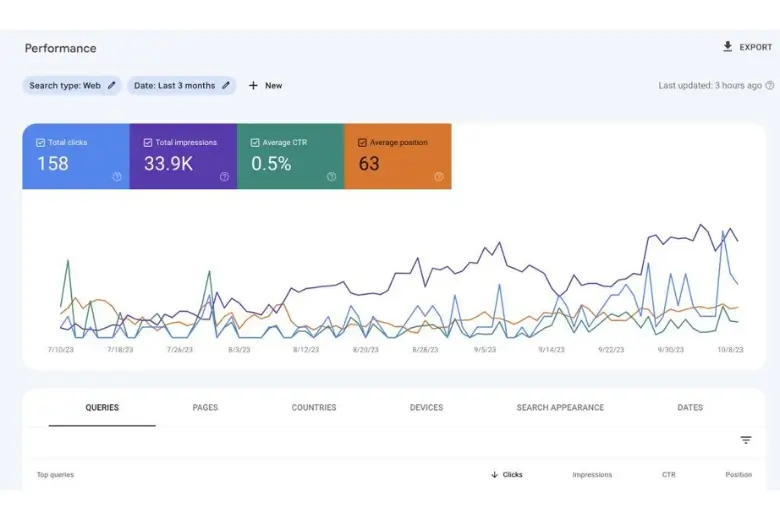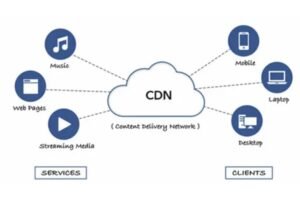The digital landscape is constantly evolving, with websites multiplying at an incredible rate. Did you know that there are over 1.8 billion active websites on the internet today? With such stiff competition, it’s crucial to optimize your website’s visibility to stand out from the crowd. One powerful tool that can help you achieve this is Search Console.
Search Console is an indispensable resource for website owners, providing valuable insights into how your site appears in Google search results. But simply having Search Console set up isn’t enough. To truly harness its potential, you need to configure it properly. In this article, we’ll guide you through the process of optimizing your Search Console configuration to unlock the full power of this tool.
Understanding Search Console and its Importance
Search Console, also known as Google Search Console, is a powerful tool designed to optimize your website’s search engine performance. By gaining deeper insights into how your site is perceived by search engines, you can make data-driven decisions to enhance visibility and drive organic traffic.

With Search Console, you can monitor your website’s presence in Google search results and identify any issues that may be hindering its performance. It provides valuable information on search queries, impressions, click-through rates, and more. By understanding how users discover your website and the keywords they use, you can refine your content strategy and attract targeted traffic.
One of the key features of Search Console is the ability to submit your sitemap, allowing search engines to crawl and index your web pages more efficiently. This helps ensure that your latest content gets discovered and included in search results promptly.
“Search Console gives you the tools and insights to optimize your website’s organic search performance. By utilizing its features and functionalities, you can stay ahead of the competition and drive meaningful organic traffic to your site.”
Additionally, Search Console allows you to identify and fix technical issues that may affect your website’s visibility. It provides alerts for any crawling or indexing errors, mobile usability concerns, and security issues. By addressing these issues promptly, you can ensure that your website remains accessible and user-friendly across different devices.
Understanding the importance of Search Console and utilizing its features can give you a competitive edge in the digital landscape. It empowers you to optimize your website’s search engine visibility, attract targeted organic traffic, and ultimately achieve your goals.
Configuring Search Console for Your Website
Configuring search console is a crucial step in optimizing your website’s performance in search engine results. By properly setting up search console and adjusting the necessary website configurations, you can improve your website’s visibility and organic traffic. In this section, we will guide you through the steps required to configure search console for your website, ensuring you make the most of this powerful tool.
Linking Your Website to Search Console
The first step in configuring search console is to link your website to the platform. Follow these instructions to complete this essential task:
- Sign in to your Google account and go to the Google Search Console website.
- Click on “Add a property” and enter the URL of your website.
- Choose the appropriate method for verifying ownership of your website. This can be done through HTML file upload, HTML tag verification, Google Analytics, or Google Tag Manager.
- Once the verification process is complete, your website will be linked to search console.
Essential Settings and Configuration
After linking your website, it’s important to configure the necessary settings to ensure optimal performance. Here are some key settings to consider:
- Preferred Domain: Select the preferred version of your website domain (www or non-www) to consolidate indexing signals.
- Geographic Targeting: Specify the geographic target for your website if you have a specific audience location.
- Crawl Rate: Adjust the crawl rate of search engine bots to optimize how often they visit your website.
- URL Parameters: Configure URL parameters to instruct search engines on how to handle dynamic URLs and avoid duplicate content issues.
- Mobile Usability: Check and address any mobile usability issues to enhance your website’s mobile performance and user experience.
Additional Tips
Here are some additional tips to consider when configuring search console:
“Regularly monitor search console data to identify website issues and opportunities for improvement.”
By regularly monitoring search console data, you can identify potential website issues, such as crawl errors or manual penalties, and take appropriate actions to address them. Additionally, analyzing search queries and click-through rates can provide insights to optimize your content and drive more organic traffic to your site.

Now that you have learned how to configure search console for your website, you can proceed to the next section to discover advanced techniques for optimizing search console and improving search engine visibility.
Optimizing Search Console for Enhanced Search Engine Visibility
In order to maximize your website’s visibility on search engines, it is crucial to optimize your search console settings. By leveraging advanced techniques and strategies, you can enhance your website’s performance and drive organic traffic. In this section, we will explore how you can effectively optimize your search console settings for improved search engine visibility.
Leveraging Search Console Data
One of the key benefits of using search console is the valuable data it provides about your website’s performance on search engines. By analyzing this data, you can gain insights into your website’s strengths, weaknesses, and opportunities for improvement. Here are some ways you can leverage search console data:
- Identify top-performing keywords: Analyze the keywords that are driving the most traffic to your website and prioritize optimizing your content for those keywords.
- Monitor click-through rates (CTRs): Pay attention to the CTRs of your website’s pages in search results. If certain pages have low CTRs, consider optimizing their meta titles and descriptions to make them more enticing.
- Identify crawl errors: Search console provides information about any crawl errors encountered by search engines while accessing your website. Identifying and fixing these errors can help improve your website’s overall performance.
Identifying and Fixing Website Issues
Search console allows you to identify various issues that may be impacting your website’s search engine visibility. By addressing these issues, you can ensure that your website is optimized for maximum visibility. Here are a few common website issues that you can identify and fix using search console:

- Page loading speed: Slow-loading pages can negatively impact your website’s performance on search engines. Use the insights provided by search console to identify pages with slow loading speeds and take steps to optimize them for faster performance.
- Mobile optimization: With more users accessing the internet through mobile devices, it is essential to have a mobile-friendly website. Search console can help you identify any mobile usability issues and guide you in optimizing your website for mobile devices.
- Structured data errors: Structured data markup can enhance your website’s appearance in search results. However, incorrect or missing structured data can lead to errors. Search console can help you identify and fix any structured data issues to improve your website’s visibility.
Making Data-Driven Decisions
Optimizing your search console settings requires making informed decisions based on data. By analyzing the data provided by search console, you can make data-driven decisions to improve your website’s visibility. Here are some strategies:
- Content optimization: Use search console data to identify the keywords and pages that are performing well. Optimize your content based on these insights to increase your website’s visibility for relevant searches.
- Website structure improvements: Analyze search console data to identify pages with low traffic or high bounce rates. Consider improving the structure and navigation of these pages to enhance user experience and boost organic traffic.
- Link building opportunities: Search console provides information on the websites that link to your website. Analyze this data to identify opportunities for acquiring high-quality backlinks, which can positively impact your search engine visibility.
By optimizing your search console settings and leveraging the data it provides, you can enhance your website’s visibility on search engines and drive organic traffic. Take the time to analyze and implement the strategies discussed in this section to maximize the performance of your website.
Conclusion
In conclusion, this article has provided a comprehensive guide on search console configuration. By following the tips and best practices shared in this guide, you can maximize your website’s search engine visibility and drive organic traffic.
Configuring and optimizing your search console is crucial for improving your website’s performance in search engine results. It allows you to monitor and analyze important data, identify and fix issues, and make informed decisions to enhance your online presence.
Take the necessary steps today to ensure your search console is properly configured. Verify ownership, adjust settings, and regularly review the data provided to gain valuable insights. By leveraging the power of search console, you can unlock the full potential of your website and achieve your SEO goals.
FAQ
How do I configure search console for my website?
To configure search console for your website, follow these steps:
1. Sign in to your Google account and go to the Google Search Console homepage.
2. Click on “Add Property” and enter your website URL.
3. Choose a verification method (HTML file upload, HTML tag, domain name provider, or Google Analytics).
4. Complete the verification process according to the chosen method.
5. Once verified, you can access the search console dashboard and start configuring essential settings for your website.
Why is search console important for my website?
Search console is crucial for your website because it provides valuable insights into how your site is performing in search engine results. It helps you understand which keywords are driving traffic to your site, identify and fix issues that may affect your site’s visibility, and optimize your content for better search engine rankings. By utilizing search console, you can make data-driven decisions to improve your website’s presence in search engine results pages.
What settings should I adjust in search console for optimal results?
To optimize search console settings, consider the following:
1. Submitting your sitemap to enhance crawling and indexing.
2. Monitoring the Performance report to track clicks, impressions, and average position.
3. Setting up email notifications to stay informed about critical issues.
4. Configuring URL parameters to ensure proper indexing.
5. Utilizing the Mobile Usability report to address mobile optimization concerns.
6. Enabling data sharing with Google to access enhanced features and personalized insights.
How can I leverage search console data to enhance my website’s performance?
Search console data can be used to drive website improvements. Here’s how:
1. Analyze search queries to identify high-performing keywords and optimize your content accordingly.
2. Monitor click-through rates (CTRs) and impression data to evaluate the effectiveness of your meta descriptions and title tags.
3. Use the Coverage report to identify and fix issues that may prevent your pages from being indexed.
4. Identify pages with low average positions and work on improving their keyword targeting and relevance.
5. Regularly check the Mobile Usability report to ensure your website is mobile-friendly, as this can impact rankings.
What are some common website issues that search console can help identify?
Search console can help identify various website issues, including:
1. Crawl errors, such as broken links or server errors.
2. Security issues, like hacked content or malware.
3. Indexing issues, where pages are not being properly indexed.
4. Mobile usability problems, such as unresponsive design or long loading times.
5. AMP (Accelerated Mobile Pages) errors, if you have implemented AMP on your website.
By addressing these issues promptly, you can improve your website’s performance and search engine visibility.






